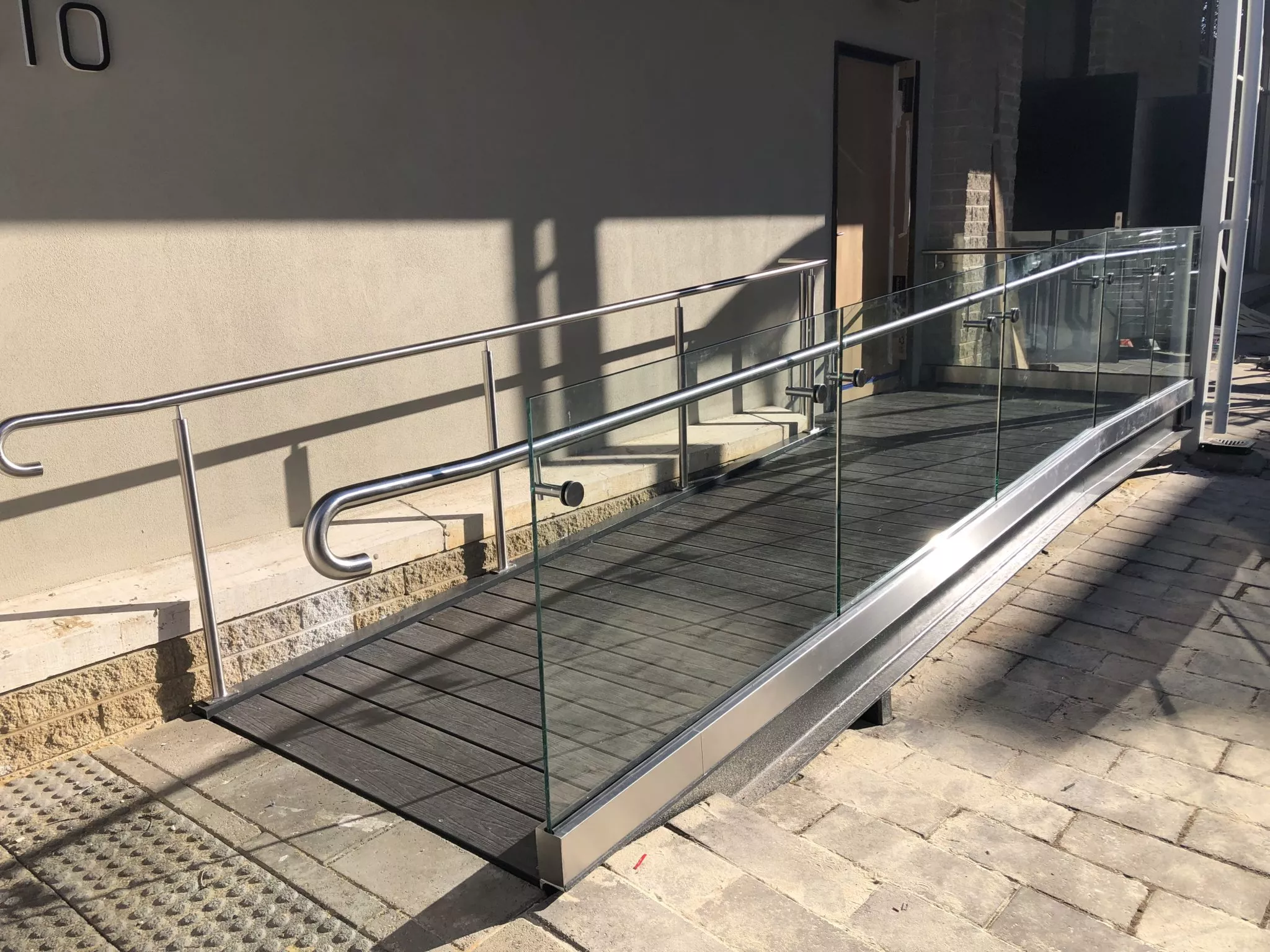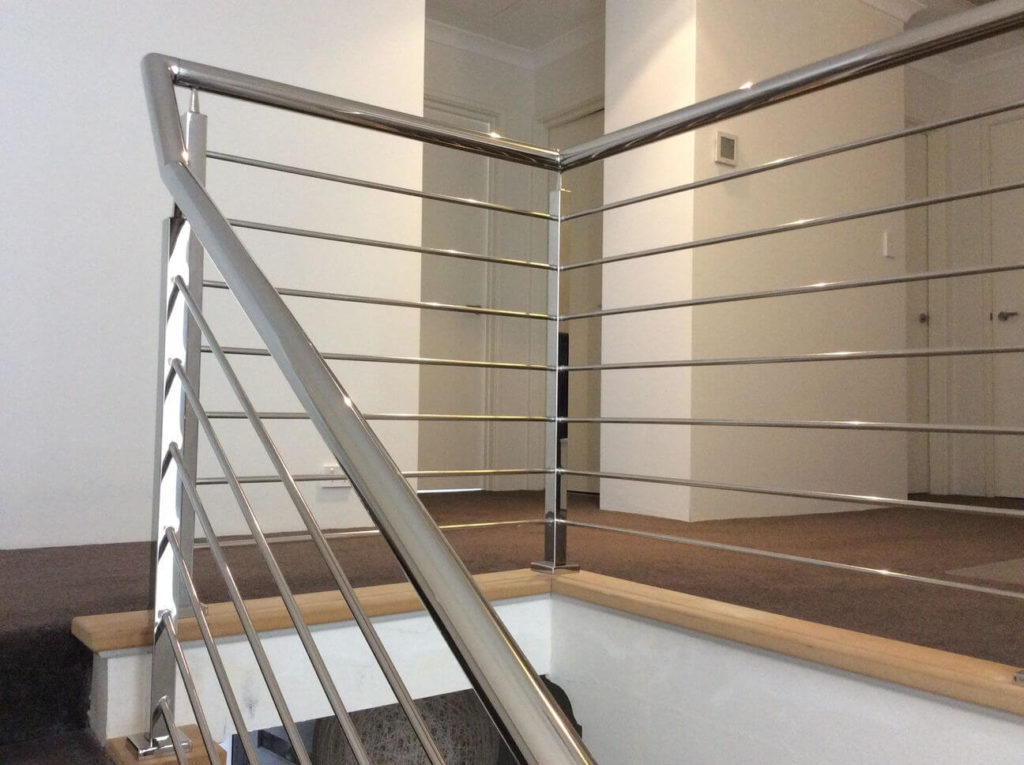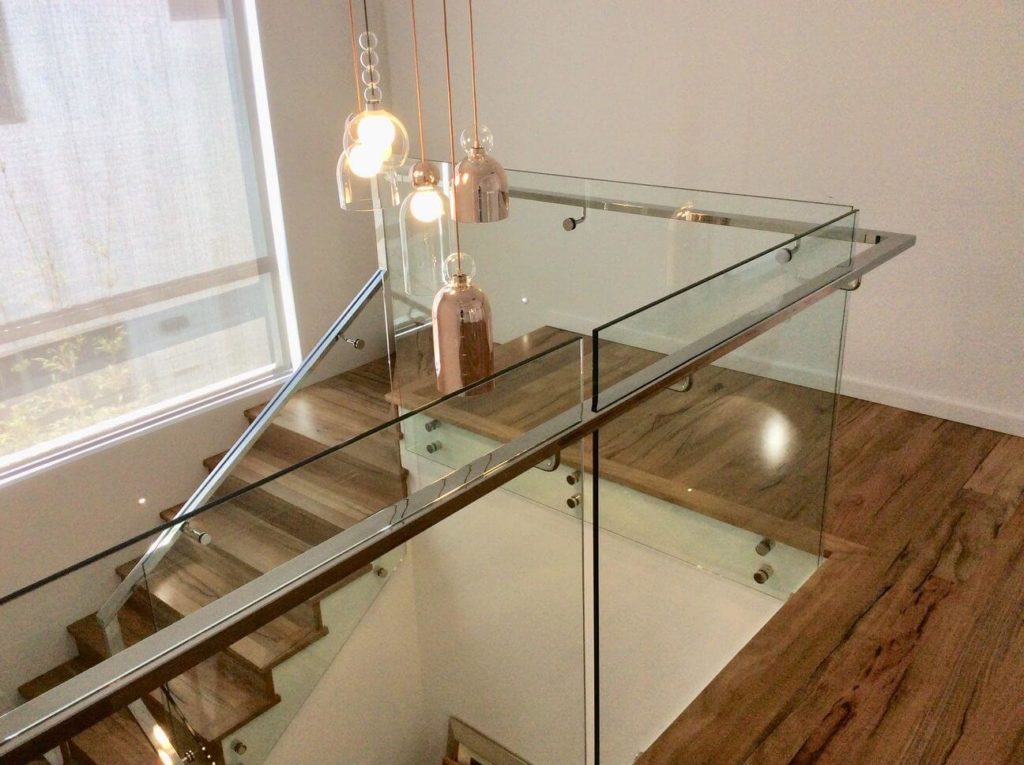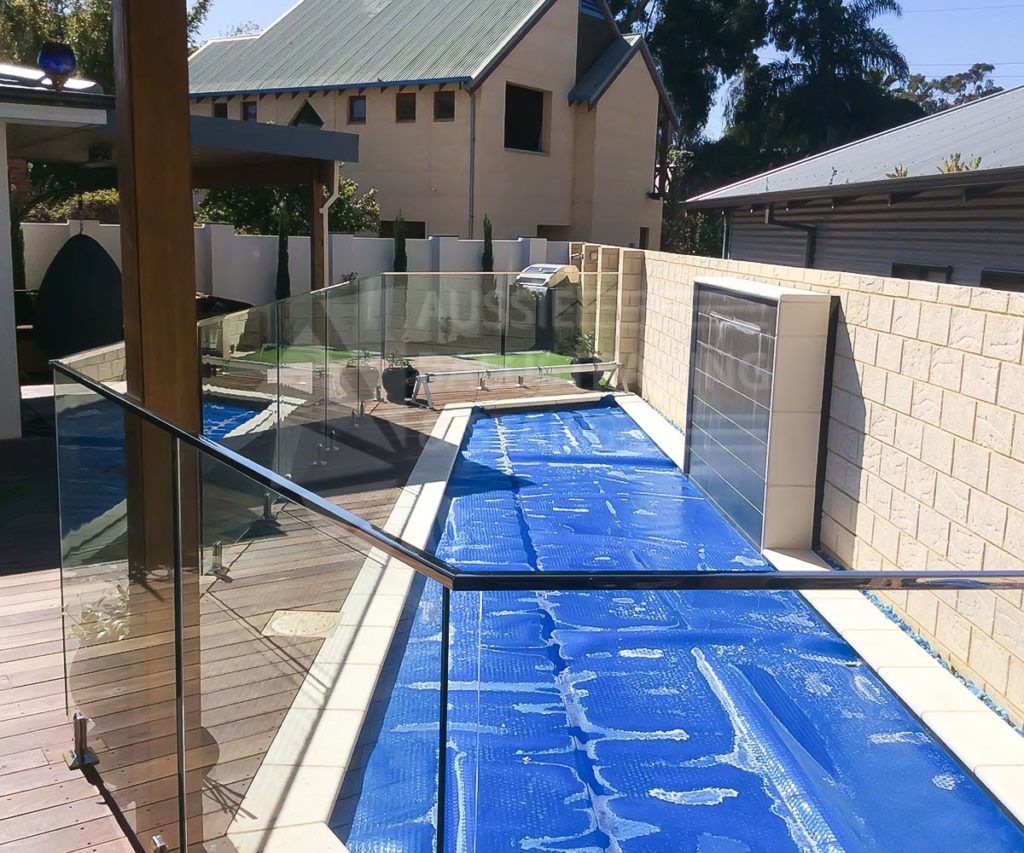While not many people give it a second thought nor realize the importance, buildings have to satisfy strict accessibility requirements. One of the most important reasons for this is that a building needs to be easily accessible even by the disabled.
For instance, rather than only including stairs to get from one floor to the other, ramps and elevators need to be available to allow those using wheelchairs to get around. There are many other examples, such as including large and clear indicators for people with vision impairment and providing unisex restrooms.
Many laws, regulations, and standards that revolve around the construction of different buildings focus on accessibility. They are there to make it fairer for everyone in it to get around, whether they are disabled or not.
With that being said, when it comes to building wheelchair ramps, one of the requirements you need to satisfy that many other builders fail to comply with is the AS1428. Here is what you need to know about it:
What is AS1428?
The Premise Standards set AS1428 as a national requirement for new buildings, including already-built property that is undergoing work to comply with the Disability Discrimination Act (DDA). While the DDA itself does not set the building requirements, what it does do is bring awareness to such issues.
What are the examples of AS1428?
AS1428 is the list of specifications your building needs to satisfy in terms of building sanitary facilities, pathways, ramps, and so on to be accessible to disabled individuals. For example, paths must offer unobstructed and easy travel for every user and have no steps in their design. Another example is that toilets and other sanitary facilities need to be user-friendly.
Other than focusing on the utility of these facilities, AS1428 also talks about providing the best experience to people. For example, about half of all toilet facilities need to have a unisex toilet, and these toilets should tell the individual where other toilets may be located.
What about AS1428 for wheelchair ramps?
There are a few requirements set under AS1428 that relates to how certain construction features, such as ramps and pathways, need to be friendly to disabled personnel.
1. Ramp Gradient: Refer to Figure 1 for the visual representation
- The gradient has maximum tolerance of 3% throughout the length while not exceeding 1:14 gradient/slope.
- The ramp shall have landing at the start and end of the ramp. The length of ramp shall not exceed following length of:
- 9m for 1:14 gradient/slope
- 15m for 1:20 gradient/slope
Note: If gradient/slope is outside these parameters, the intervals must be calculated with linear interpretation.
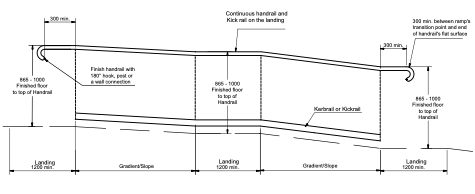
2. The ramp must have following attributes to be compliant:
- Handrail should extend end to end of ramp and it should comply with handrail standards.
- Handrail must extend 300mm on both end of landing as shown in Figure 1.
3. If ramp has a change of direction, the approching angle of ramp to landing shall be 90° as shown in Figure 2.

4. If ramp is installed close to boundary of a property, the minimum distance between property boundary and transition point of ramp must be 900mm as shown in Figure 3.


6. The kerb, kick rail or kerb rail must meet following criteria. See Figures 5 & 6 for visual representation:
- Ramp must have Kick rail / kerb rail parallel to handrail unless handrail is fixed against the wall.
- The handrail can be 100mm offset internally from inner face of kerb, kerb rail or kick rail or preferably flush with each other.
- If post is fitted on top of solid kerb, the height of solid kerb must be minimum 150mm.
- If solid kerb height is built to be 65mm, the post must be set back by minimum 200 mm from inside of solid kerb.
- If kerb rail/kick rail is fitted to posts, the gap between floor and kerb shall be maximum 65mm and height of kerb rail/kick rail shall be minimum 150mm.
- If twin rail is used for kerb rail/kick rail, the height of rail must be maximum 150mm and gap in-between rails must be maximum 20mm.


7. Ramps shall meet following requirements which are straight, turn 90° or turn 180°.
- Distance between ramp handrails must be minimum 1000mm.
- Straight ramp shall have minimum 1200mm long landing.
- 90° ramp shall have minimum 1540mm long landing. (Figure 7)
- 180° ramp shall have minimum 1500×1500 long landing with permitted splay of 500mmx500mm. (Figure 8)


Conclusion
Disability-related requirements, such as those stated under AS1428, are some of the many things you will need to comply with when constructing a new building or working on an old one to satisfy the DDA.
Since there are so many requirements to keep in mind, it can be tough to keep track of everything you need to do. For that reason, we highly recommend working with builders who have comprehensive knowledge of building codes and legal requirements. That way, you can ensure your building provides the best experience for any visitor and keep yourself out of legal trouble.
Are you looking to build disabled-friendly stairs in Perth? Aussie Balustrading and Stairs can offer you the build you need to comply with the DDA and more. Get in touch with us today!

